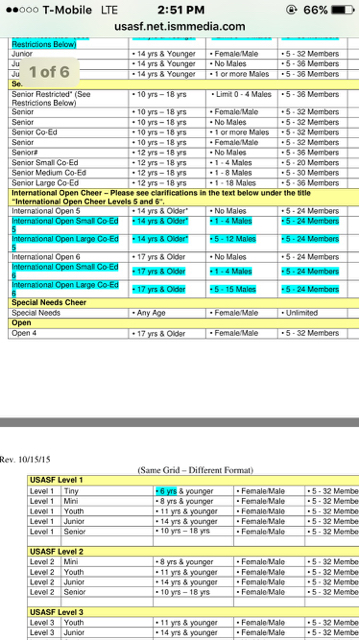justpeachy
Cheer Parent
- Mar 26, 2010
- 535
- 1,552
It has never been on my radar in the past.... what does IOC entail?
All I know is that it's coed, there aren't age restrictions (is that even correct), and something about trials at Worlds....
Is there a different scoresheet? How is it different? How does trials work?
Help a clueless mama out here.
All I know is that it's coed, there aren't age restrictions (is that even correct), and something about trials at Worlds....
Is there a different scoresheet? How is it different? How does trials work?
Help a clueless mama out here.


